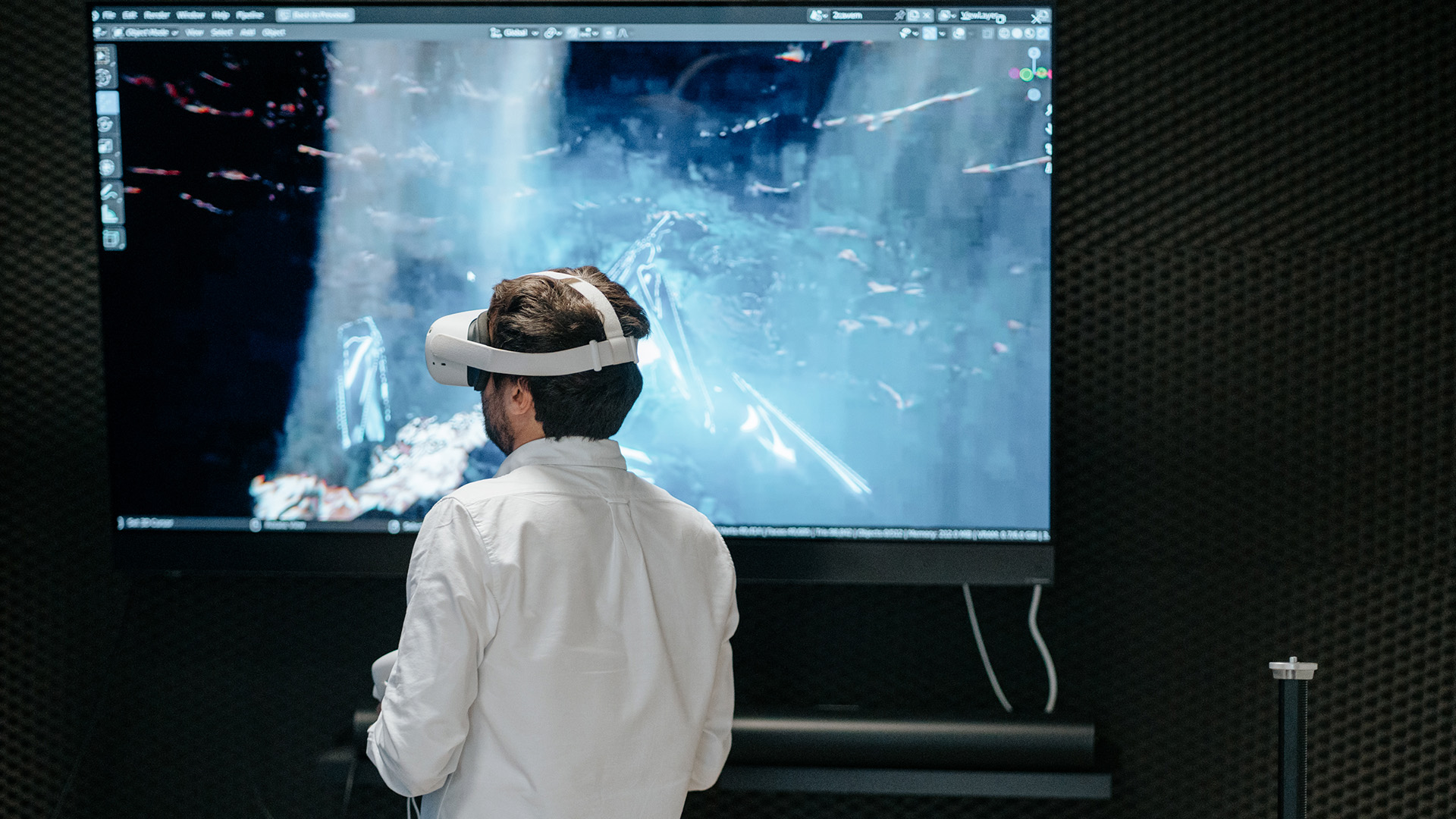- Sectors
- Aerospace & Defense
- Big science
- Biotechnology
- Fintech
- Work at ARQUIMEA
- Insights
At ARQUIMEA Research Center we believe that Artificial Intelligence is one of the main drivers of transformation in contemporary society. We apply AI in an attempt to provide answers to the major challenges we face in fields as diverse as health, entertainment, mobility, advertising and finance. Our main lines of research within Orbital IA are:

We investigate how a deep learning approach in AI can help streamline and automate the scanning and modeling of 3D scenes and objects. This new 3D representation paradigm and format will revolutionize audiovisual production, from visual effects (VFX) and virtual production (ICVFX) to extended reality (XR) experiences and applications.
Our goal is to achieve a new 3D model format that is much lighter, more efficient and photorealistic than the conventional ones – based on point clouds, meshes or voxels – by means of the so-called “neural radiance fields” or NeRF.
We investigate how geometric deep learning and graph neural networks can help accelerate the development of new drugs, taking into account the geometric information of molecules and not only their physicochemical and quantum description. This new approach to the discovery of drugs promises to reduce development times of new drugs from decades to months, focusing on neurodegenerative diseases such as ALS, multiple sclerosis, Parkinson’s disease or Alzheimer’s disease.
Our goal is to replace the vast majority of tests currently performed in the laboratory with computational simulations, from the prediction of drug-protein affinity to the synthesis and design of new molecules.

Machine learning, also called automated, computational or machine learning, is the subfield of computer science and a branch of Artificial Intelligence, which aims to develop techniques that enable computers to learn.
Our goal is to develop computational learning on small devices, without the need for large GPUs. We seek to bring machine learning models close to the sensors, investigating new data compression techniques.
We refer to the ability of autonomous systems, such as vehicles, drones or robots, to operate safely and reliably in dynamic and complex environments, minimizing the risks of accidents or damage to people, property and the environment.
We investigate to solve the Novelty Detection problem with a technique developed by our research team through neural fields. We work to ensure that autonomous systems based on Artificial Intelligence are safe and do not put people or their environment at risk.

We investigate how deep learning-based computer vision methods can aid in the detection of sperm whale blows, for the early detection of the presence of these cetaceans on the surface. Maritime traffic represents a real threat to these key players in marine biodiversity, as traffic is becoming denser and ships faster.
Our objective is to achieve a real-time detection system of sperm whales – the most endangered species in the Canary Islands – on the surface, to avoid collision with fast ferries between islands, using thermal imaging.
Contact us, set us a challenge and discover everything we can offer you.